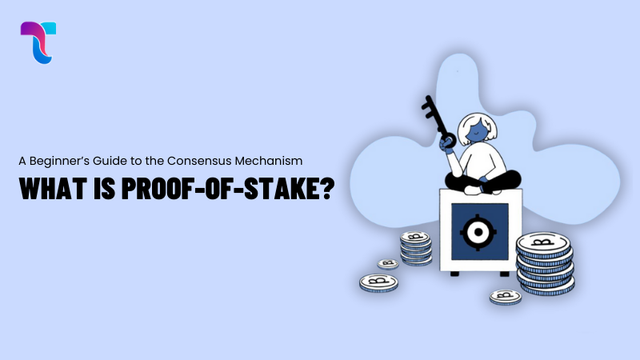What Is Proof-of-Stake? A Beginner’s Guide to the Consensus Mechanism
The field of blockchain and cryptocurrencies is based on consensus mechanisms – the guidelines that determine how transactions are verified and added to the blockchain. One of the most well-known of these mechanisms is proof-of-stake (PoS).
If you’re just getting into the world of crypto, you may have heard of terms like proof-of-work (PoW) and proof-of-stake, but you may not have fully understood how these differ or why PoS has become such a popular topic. This guide aims to explain this in simple terms so you can understand what proof-of-stake is, how it works, and why it’s important.
What is Proof-of-Stake (PoS)?
Proof-of-stake is a consensus mechanism used to verify transactions and create new blocks in a blockchain. Unlike Proof-of-Work, which relies on miners solving complex puzzles, PoS enables participants to stake their cryptocurrencies to help secure the network.
In simple terms:
This method eliminates the need for energy-consuming mining, making PoS a more eco-friendly, cost-effective, and scalable option than older methods.
How does Proof-of-Stake work?
To better understand PoS, let’s analyze the steps:
- Staking tokens: Users stake their cryptocurrencies in the network as collateral. The more tokens you stake, the better your chances of being selected to validate the next block.
- Validator selection: The blockchain protocol randomly selects a validator, but factors such as the amount of stake and duration of staking often play a role in the decision.
- Block construction: The selected validator verifies the transactions in the block and adds it to the blockchain.
- Rewards: Validators earn rewards in the form of transaction fees or new tokens for their efforts.
- Penalties (slashing): If a validator is dishonest or attempts to tamper with the system, part of the tokens he or she has staked may be confiscated. This mechanism helps keep the network secure and reliable.
Advantages of Proof-of-Stake
When it comes to proof-of-stake (PoS), it has some compelling advantages that make it a favorite among developers, investors, and users, alike:
- Energy efficiency: Unlike proof-of-work (PoW), PoS doesn’t rely on solving those energy-consuming puzzles. This not only makes it environmentally friendly but also easier on the pocket.
- Scalability: PoS blockchains can handle transactions at faster speeds, which is perfect for real-world uses like decentralized finance (DeFi) and NFTs.
- Accessibility: If you have tokens, you can stake them and help secure the network. There’s no need for expensive mining equipment, which really opens the door for more people to get involved.
- Security: Validators stake their staked tokens—they risk losing them if they try to commit fraud. This keeps the system secure and fair.
Challenges of Proof-of-Stake
Of course, PoS is not without its challenges. Here are some challenges to consider:
- Concentration of wealth: The more tokens you have, the better your chances of being chosen, which can give wealthy participants an edge.
- Risks of centralization: If just a few validators control a large number of tokens, they can dominate the network.
- Complexity: For newcomers, the staking process can seem a bit daunting compared to the simplicity of mining.
Despite these obstacles, continued advancements in blockchain technology are working to make PoS more inclusive and balanced.
Examples of Proof-of-Stake Blockchains
Many major blockchain projects are now using PoS or its variations, such as:
These platforms demonstrate how PoS is impacting the future of cryptocurrencies.
Why Proof-of-Stake is Important for the Future of Crypto
Proof-of-Stake (PoS) is a significant leap forward in the blockchain world. It reduces energy consumption, makes it easier for newcomers to join, and increases scalability, all of which are crucial to the widespread adoption of blockchain technology.
As governments, businesses, and individuals dive into blockchain solutions, PoS is emerging as a more sustainable, secure, and efficient option over older methods.
Final Thoughts
Proof-of-Stake isn’t just a technical term — it’s the key to unlocking the future of blockchain and cryptocurrencies. For those just starting out, it’s important to understand the concept of PoS, as it supports some of the most exciting blockchain projects available today.
Whether you’re an investor, developer, or just an individual with an interest in the crypto space, keeping an eye on PoS-based blockchains will give you an edge in the rapidly changing digital economy.
If you want to dive deeper into blockchain development or build new blockchain solutions using proof-of-stake, Technoloader is here to help. With extensive knowledge of blockchain and Web3 services, Technoloader provides you with customized solutions in line with the latest industry standards, ensuring your project stays ahead.
